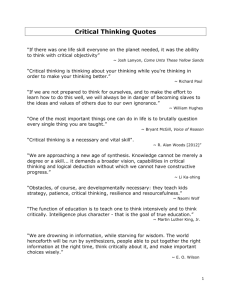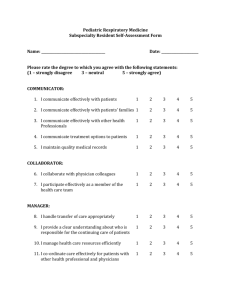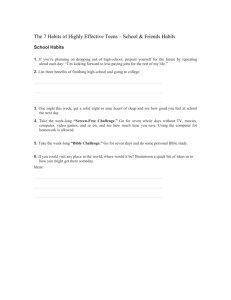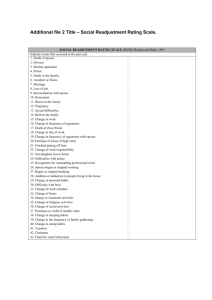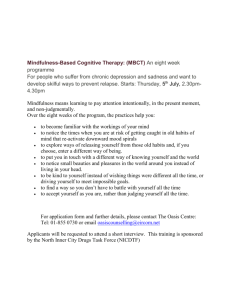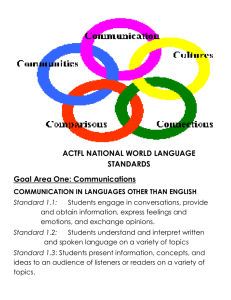Measuring My Critical Thinking
advertisement
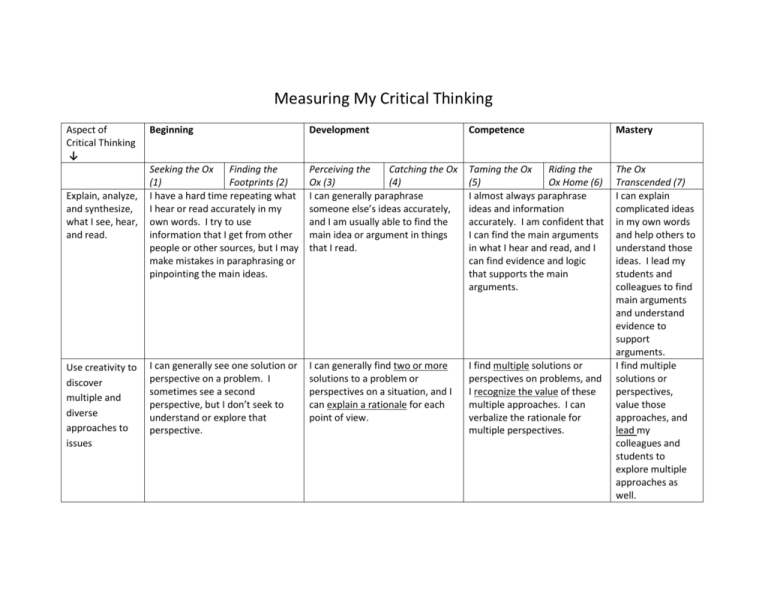
Measuring My Critical Thinking Aspect of Critical Thinking ↓ Explain, analyze, and synthesize, what I see, hear, and read. Use creativity to discover multiple and diverse approaches to issues Beginning Development Competence Mastery Seeking the Ox Finding the (1) Footprints (2) I have a hard time repeating what I hear or read accurately in my own words. I try to use information that I get from other people or other sources, but I may make mistakes in paraphrasing or pinpointing the main ideas. Perceiving the Catching the Ox Ox (3) (4) I can generally paraphrase someone else’s ideas accurately, and I am usually able to find the main idea or argument in things that I read. Taming the Ox Riding the (5) Ox Home (6) I almost always paraphrase ideas and information accurately. I am confident that I can find the main arguments in what I hear and read, and I can find evidence and logic that supports the main arguments. I can generally see one solution or perspective on a problem. I sometimes see a second perspective, but I don’t seek to understand or explore that perspective. I can generally find two or more solutions to a problem or perspectives on a situation, and I can explain a rationale for each point of view. I find multiple solutions or perspectives on problems, and I recognize the value of these multiple approaches. I can verbalize the rationale for multiple perspectives. The Ox Transcended (7) I can explain complicated ideas in my own words and help others to understand those ideas. I lead my students and colleagues to find main arguments and understand evidence to support arguments. I find multiple solutions or perspectives, value those approaches, and lead my colleagues and students to explore multiple approaches as well. Find relevant information to address tasks and problems If I need information, I will ask someone who is available, search the Internet, or guess. I usually accept the information that I find, and I base my judgment on what is convenient and quick. If I need information, I will look for someone who has experience or training in that area. I may also search the Internet. I am skeptical of sources that may be biased, and I will double-check the information I receive. If I need information, I seek people with expertise, and I double-check my facts. I use the internet, but I focus on reputable sources and use library data bases when I can. I treat media and the information it provides cautiously. I seek information from a variety of trusted sources, ask questions, double check facts, and lead others to consider information carefully. Evaluate claims and evidence to draw reasonable conclusions I sometimes have difficulty coming to a conclusion about an issue or question, and I would prefer to repeat what someone else has said. I investigate issues and look at the evidence that is available. I can come up with a solution or a conclusion that is consistent with the evidence. I investigate issues and evidence, and I can come up with a reasonable conclusion that lines up with the evidence. I can defend my conclusion against alternate interpretations of the evidence. Apply concepts to real-world problems When I am presented with a situation or problem, I don’t usually know how to approach it. I’m not sure how to use what I learn in class in situations outside of class. I usually need help with new problem types. See connections I work best when I can keep When I am presented with a situation or problem, I can usually think of a related concept or theory from what I have studied or read. I may not apply the concept correctly, especially if the situation is totally unfamiliar, but I have an idea of how to begin. I see the relationship between When I am presented with a situation or problem, I can connect it to a concept or theory that I’ve studied, read about, or experienced. I can usually apply concepts and theories and use them to solve problems that I encounter every day. I look for patterns and I investigate issues, develop logical conclusions, defend conclusions, and lead students and colleagues to develop more logical conclusions. I can apply what I’ve studied or read to problems I encounter every day, and I help others to apply concepts to problems. Justify conclusions and solutions I look for patterns and patterns both within a discipline and across disciplines subjects and situations separate. I don’t see any relationship between my classes, between my classes and my work, my social life and my school work. classes in a sequence, and I build on what I’ve learned in one class to succeed in another. I see relationships between different classes, like history or biology, and between school, church, home, and the office. relationships in classes, books, situations, and events. I can relate what I learn in one situation to what happens in other situations, and I use these connections to be a more effective student, employee, and person. Reflect on our own thinking and learning. I leave the classroom or the office as quickly as I can. I don’t spend time reviewing what I learned or what happened. I may leave myself a little bit of time to review what happened in my classroom and my office. I might make notes or plan to do something different. I schedule time in my day to think about what I have read, studied, or done. I think about decisions, habits, and processes in my life, in an effort to improve those decisions, habits, and processes. and relationships, and I use these to learn and perform more effectively. I look for opportunities to point these patterns and connections out to my colleagues and students. I schedule time to think about my own learning and decision making in an effort to improve. I encourage and lead others to reflect on learning and thinking, too. How did you do? 42-49 You are a critical thinking Master! (That ox is safe in your barn, ready when you need it!)You’ve got critical thinking habits at your disposal, ready to use at any time, and you are actively engaged in helping others to think critically. 35-41 You are a competent and habitual critical thinker. (That ox is working for you!) You are using critical thinking habits on a daily basis. Look for ways to help students and colleagues practice critical thinking as well by asking questions, gently suggesting alternative approaches, questioning source information, and probing problematic assumptions or conclusions. 28-34 You are developing and practicing critical thinking habits. (That ox has been tamed!) You have begun to use critical thinking in your daily life, and through practice, you can make critical thinking behaviors into habits. You can improve by carving out time in your daily schedule to think and reflect, spending time with others who think critically, and carefully considering your information sources, your assumptions, and your conclusions. 21-27 You are beginning to use critical thinking. (That ox has been caught!) You have recognized that the obvious isn’t always the best, and you are beginning to go beyond the surface in your thinking. You can improve by reserving some time each day to think about the decisions you are making and the outcomes of those decisions, spending time with people around you who think critically, checking your facts and sources for accuracy and bias, and listening to other points of view and paraphrasing what others say. 14-20 You are beginning to understand what critical thinking is all about. (That ox has been sighted!) You have realized that your thinking may not be working well for you, and by looking at those around you, you see that there might be a more effective way to think, whether at home, in the office, or in the classroom. You can improve by continuing to observe the people around you, listening for different ideas and approaches, double-checking your information, and re-stating what others are saying in your own words. 7-13 You aren’t really sure what it means to think critically, but you are going to find out. (That ox has left some tracks!) You can learn more about critical thinking by trying some new things: take a course at the College, talk to people whose backgrounds are different from yours, look at different websites or newspapers, take time to think about decisions you have made, and consider what went well and what did not. 0-6 You are not achieving your goals, and you are not sure why. You have begun your journey, your search to know more. (That ox is out there, somewhere!) You can learn about critical thinking by being persistent, asking questions, pushing yourself to try something again, even if you didn’t quite get it the first time.
